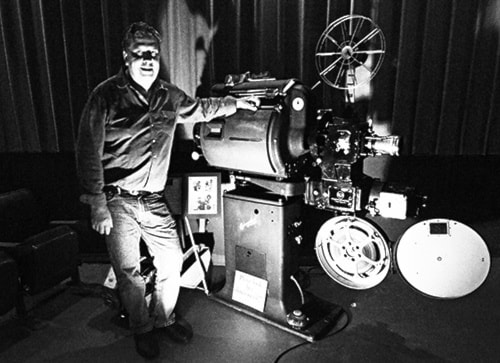The Hope Cinema is clearly a force to be reckoned with upon a visit one rainy Friday afternoon. Kevin Larson who has been bravely helming the operation is no stranger to the magic of the cinema experience of days gone by.
Opening its doors to the Hope Standard, one thing resonated — the classic style of the local cinema is a gem that seems to have escaped the flow of time.
“They don’t make them like this anymore,” said Larson.
Walking through the doors of the impressive facade and its neon lights, one is struck by the careful preservation of the theatre. It is reminiscent of the earlier days of movie going experiences, long before the onslaught of generic super-sized movie dome houses became the norm.
After making the switch to digital a couple years ago, Larson, has maintained the integrity of the cinema, along with a level of showmanship that makes the viewing experience that more pleasurable.
“We’ve kept it going, where other small towns have died out.”
A unique attribute and asset to Hope with small town cinema fizzing out, Larson has honed in on the needs of the local market and with a passion and love of all things filmmaking is showcasing a projector worthy of the greats.
The cinema is the proud home to the Super Simplex Project 1938.
“This was one of two projectors from the Dlova Cinema in Cloverdale,” said Larson of the nostalgically beautiful machine.
A beauty from a golden era, it is one half of a two piece masterpiece.
“The reason for the two projectors is because each movie had six, two eight reels of film lasting 15 to 20 minutes — a change over was needed between each reel of film,” he said.
One entire movie could be up to 12,000 feet of 35mm film. The lamp house on the back of the projector was taken out of service in the 70’s, when xenon lamp houses materialized.
“They effectively replaced the carbon arc and created a technique to produce the exceptional light needed for film projection.”
Eventually the film magazines on the bottom and top of the projector were transformed to roller arms, which accommodated a new method of film delivery to the projector. From this unique point, all film could be built up from the reels onto a film platter, which could hold the entirety (12,000 feet of film) in the late 70’s and early 80’s.
Fully functional, this timeless projector would still be effective, if not for the advent of the great digital transition, which succeeded in dumping thousands and thousands of dollars of equipment according to Larson.
Larson’s office showcases a poster of Al Pacino in the Godfather. An ode to Sylvester Stallone for Rambo First Blood greets all lucky enough to enter, amidst a plethora of classic and contemporary artists and stars plastered to the walls.
The movie goer in Hope is set up for a visual experience that is almost obsolete in the modern era of the cinema scene. Upon exiting the theatre, one is met with waves of nostalgia for the movies of one’s youth, as they marvel at the rarity of a cultural landmark that rivals any cinema experience worldwide.
